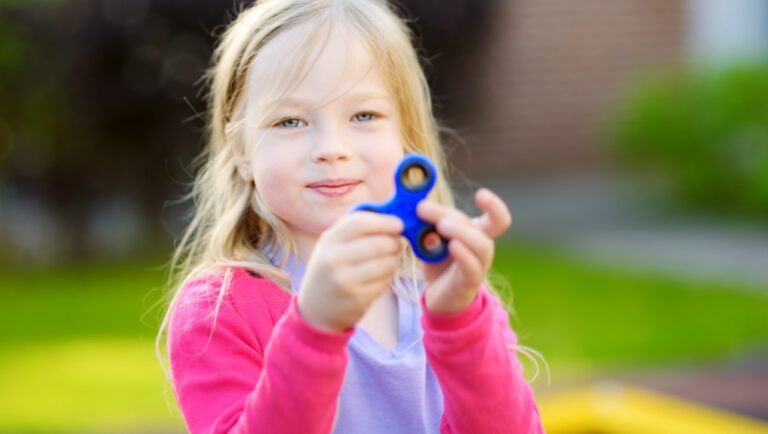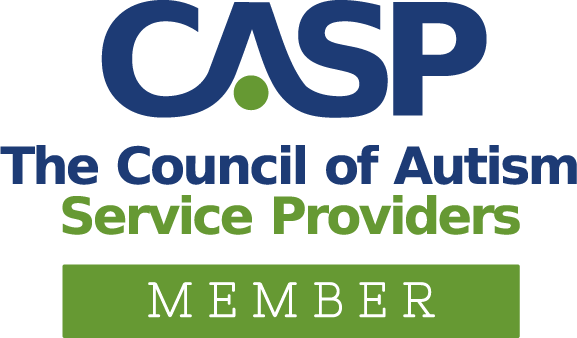Even with a consistent ASD-support team and IEP (Individualized Education Plan) in place, the transition from one school year to the next can come with its fair share of growing pains. Old behaviors may emerge again and present challenges that impede school success for many students with autism.
One month passes, then another. How soon is too soon to share concerns about whether your student with autism will be flourishing in school this year? Even though this may look daunting, there are lots of ways that caregivers can do help their students to have a smooth transition into a new school year.
We have compiled ten brilliant ways to help you build a bright educational future for autistic children and teens! Read on to find a new technique that might inspire a wonderful year full of growth!
1. Embrace Special Interests
All students do best when they are engaged. This is even more important for students with autism. If your student isn’t’ connecting to new material in school, you may want to ask yourself, “Are they engaged and not getting it, or are they failing to connect to the learning because they are not engaged?”
Your student might be in the room, but are they engaged enough to be involved in the lesson?
You can help teachers support your student’s individual needs by giving them as much information about what special interests your student has. One of the quickest ways to pique the interest of an autistic child is to bring their special interests into the learning environment. If your student isn’t involved in a lesson about counting, could they use something they find interesting to count with? A child with a special interest in dinosaurs can quickly become the class math whiz when the assignment involves counting pterodactyls!
Likewise, reading about a favorite topic is still reading! When caregivers, teachers and therapists get creative, they can create lessons that build knowledge for life!
2. Stimulate the Senses
You know your child best, and they need their senses engaged to do their best work. When provided with opportunities catered to their sensory needs, they can excel.
Teachers can gauge a student’s sensory needs by developing lessons that stimulate all five senses. Caregivers can also do the same by providing different opportunities for your student to test their senses. Are there some activities that your child prefers? Are there others that your child doesn’t prefer? Do they like to look at things that are bright or dark? Are there certain things that they like to feel? Which sounds are too loud or too soft? These are all good activities That will provide you with a lot of information you can use when planning for the educational setting.
3. Get Involved in Goal Setting
Even if your child has an IEP, they may feel disconnected from their academic goals. Do you and your student understand what they are working for and what the expectations are?
Many students with autism appreciate having some involvement in decisions about their own scholastic goals. You might consider working together to come up with a SMART goal. SMART stands for Specific, Measurable, Agreed-upon, Relevant and Time-bound.
Goal-setting allows your student the benefit of building in their own specific needs and routines to their educational goals. For example, a student struggling to learn math facts might set a goal where they use a preferred item to practice doubles facts for five minutes every day to master 0-10 by the end of one month. Understanding what the expectations are and how to achieve them helps many students with autism to flourish.
There may be students who are too young to understand or participate in creating their own goals. That’s OK! Teachers and caregivers can help students by telling them what the expectations are and helping them achieve their goals.
4. Make the Choice Clear
Some people shop at the mall because they thrive when given a variety of choices all at one time. Other people can’t stand the mall because they immediately become overwhelmed by the choices. Like shoppers, autistic children tend to get overwhelmed when faced with too much choice in a classroom environment.
This overwhelming feeling might be the result of too many activities at Center Time or too many options below a multiple-choice question. If you notice that choice causes your child not to want to participate in activities or increases challenging behaviors, narrowing them may help. Perhaps they can choose between two centers or take a quiz with fill-in-the-blank questions only. Teachers may need to provide visual supports to help students with this choice.
5. Build a Clean Routine
Children with and without an autism diagnosis thrive on routine. Not knowing what comes next can lead to anxiety and hyper fixation. This may cause students to struggle with learning because their minds are already occupied with worry and anticipation.
Teachers can be proactive by planning a clear routine that is followed consistently. When possible, provide a visual schedule so students of all abilities can independently calm their anxieties about the next activity. When the routine needs to change, provide as much advanced notice as possible, including reminders. Provide reinforcement for accepting the change. Let students know that change is OK and is a necessary part of life.
6. Choose the Right Tools
While it should be in their IEP, physical challenges may play a part in academic engagement. A student who struggles to hold a pencil is going to struggle with writing. A student who can’t see the book is going to disengage when it’s time to read aloud.
Providing students with the tools they need to be successful is a key to quality education. Success might be one adaptive pencil or large-print book away!
7. Make It Visual
Students with autism have a variety of sensory needs that may have a direct impact on their learning styles. Many students with autism do best when given visual cues to help them with transitions throughout the school day. If your student is struggling with a particular routine, providing a visual list of steps can help.
Visual routines are great for non-academic tasks, too. Consider creating a visual routine for hygiene tasks, social tasks or special holiday tasks such as trick-or-treating or opening holiday gifts. It is amazing how independent children can be when given the tools and structure they need to help themselves!
8. When in Doubt, Play It Out
Academic success is not a game, but that doesn’t mean that learning can’t be fun! At ABA Centers of America, ABA therapy is fun and playful, allowing our clients to make the most progress. Our first-in-class, quality ABA therapy ensures that learning through play is always at the center of our practice.
There are lots of different ways to incorporate play into learning. Could you turn a worksheet into a hands-on sorting activity? Can you review vocabulary words using a game of BINGO?
Play is motivating for students with and without autism! Consider creating a few mix-and-match game templates that you can use for any academic topic. They are great to have on hand when any lesson needs a hands-on component!
9. Create a Regulation Station
Students who are feeling upset or overwhelmed cannot learn. When you struggle to communicate, even an average school day can come with a host of frustrations that distract from daily activities. When frustration turns into a meltdown, you might find yourself losing your student’s attention for the duration of the school day.
You can prevent overwhelming feelings from escalating by making space for self-regulation in the home or classroom. This should be a physical space that is free from overwhelming sensory input. It might include chairs, books, fidgets or other calming activities that a student can use to help them calm down.
10. Curate a Bag of Tricks
Even if you can’t dedicate space to a regulation station, you might consider dedicating a box or desk drawer to calming sensory materials. Having fidgets and calming toys on hand can help you to quietly support a student who appears to need redirection. If a student is working on replacing certain challenging behaviors in ABA therapy, having an alternative ready to go can make this transition much easier.
Scholastic Success Is Possible for Children with Autism
School and autism can be a match made in heaven if everyone on your child’s team is working toward the same goals. If your child struggles with a transition to a new classroom, new building, or new routine, any of the above strategies might help ensure a smooth transition. Proactive approaches can lead to a bright educational future for students with autism.
At ABA centers of America, we embrace change as an opportunity to implement our fun, play-based strategies. We have techniques and ideas that can help your child take on any challenge standing in their way. Many of our tried-and-true strategies can make a major difference for students struggling with a new classroom, IEP goal or daily routine. Get in touch with ABA Centers of America today to schedule a free consultation and learn how one of our autism specialists can support your child.







